In 1916, the world witnessed the birth of an innovation that would forever change how we shop for groceries. The first-ever self-service supermarket, Piggly Wiggly, opened its doors in Memphis, Tennessee, setting a new standard for convenience. This simple yet revolutionary concept—allowing customers to choose their own products—created a ripple effect that reshaped the retail industry. With its daring approach to retail design, Piggly Wiggly not only made grocery shopping easier but also became a cornerstone in the development of modern supermarkets worldwide.
Clarence Saunders’ Vision
Clarence Saunders was a man ahead of his time. Prior to Piggly Wiggly, the common practice for grocery shopping was quite different. Customers would approach a store clerk, hand them their list, and watch as the clerk selected and bagged the items. This process was time-consuming, inefficient, and often involved a significant amount of human interaction. Saunders, who had a keen understanding of business and customer needs, envisioned a more streamlined approach.
His idea was simple but radical: allow customers to browse the aisles and select their own groceries, making the process faster, more efficient, and ultimately more empowering for the shopper. Saunders’ self-service model would give customers control over their purchases and allow for greater variety and stock rotation. This concept wasn’t just about convenience—it was also about reshaping the entire grocery shopping experience. It was a revolution in the world of retail.
Video
Watch the video on Piggly Wiggly, the first modern grocery store.
The Self-Service Revolution

At its core, the Piggly Wiggly store offered customers a completely new shopping experience. Upon entering the store, customers passed through a turnstile and were handed a basket. They could then browse through a maze of shelves, filled with hundreds of products, and pick up whatever appealed to them. The prices were clearly marked with swinging tags, allowing customers to examine and compare items freely. This was a huge departure from the traditional method of relying on store clerks to guide the process.

One of the most striking features of Piggly Wiggly’s self-service model was the absence of interaction with store staff while shopping. Customers could take as much time as they needed to make their selections without being rushed or influenced by salespeople. They simply filled their baskets, proceeded to the checkout, and paid for their items—no haggling or persuasion involved. This newfound autonomy made grocery shopping a far more enjoyable and personalized experience.
Piggly Wiggly’s Early Success and Expansion
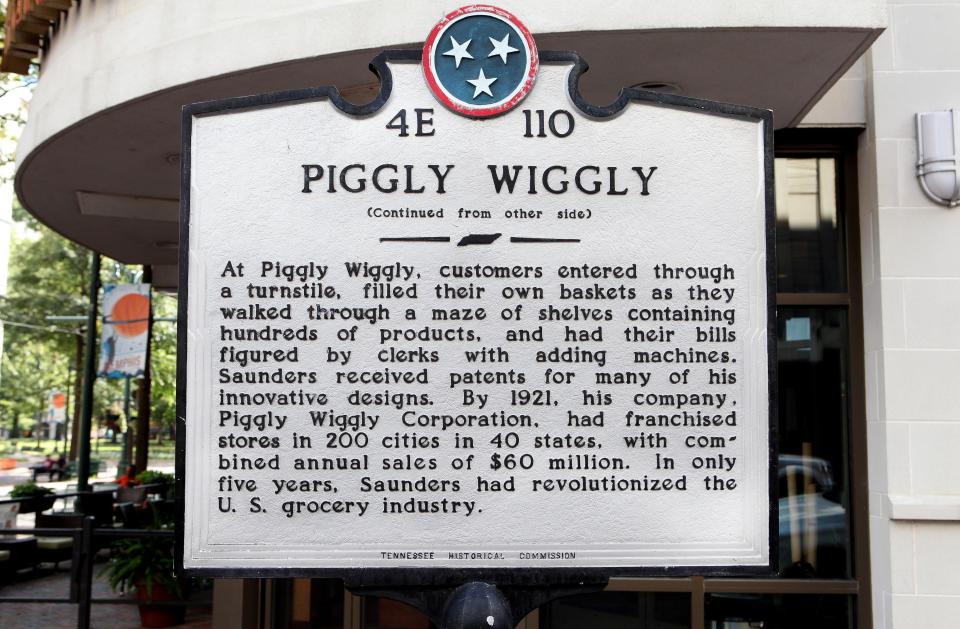
The success of Piggly Wiggly was nothing short of extraordinary. By 1921, just five years after the store’s launch, there were already 200 Piggly Wiggly locations spread across 40 states in the U.S. The popularity of the concept grew exponentially, and the company’s sales surged to $60 million—a sum equivalent to $915 million today when adjusted for inflation. This rapid expansion demonstrated that the self-service supermarket concept resonated with customers and filled a gap in the retail market.
The opening of each new Piggly Wiggly store was celebrated with events such as brass bands, beauty contests, and balloons for children, marking the importance of this new way of shopping. The brand’s growing success was attributed to its ability to provide customers with a shopping experience that was efficient, convenient, and enjoyable. More importantly, it gave people the freedom to shop at their own pace, a concept that was new and exciting at the time.
The Impact of Piggly Wiggly on the Retail Industry
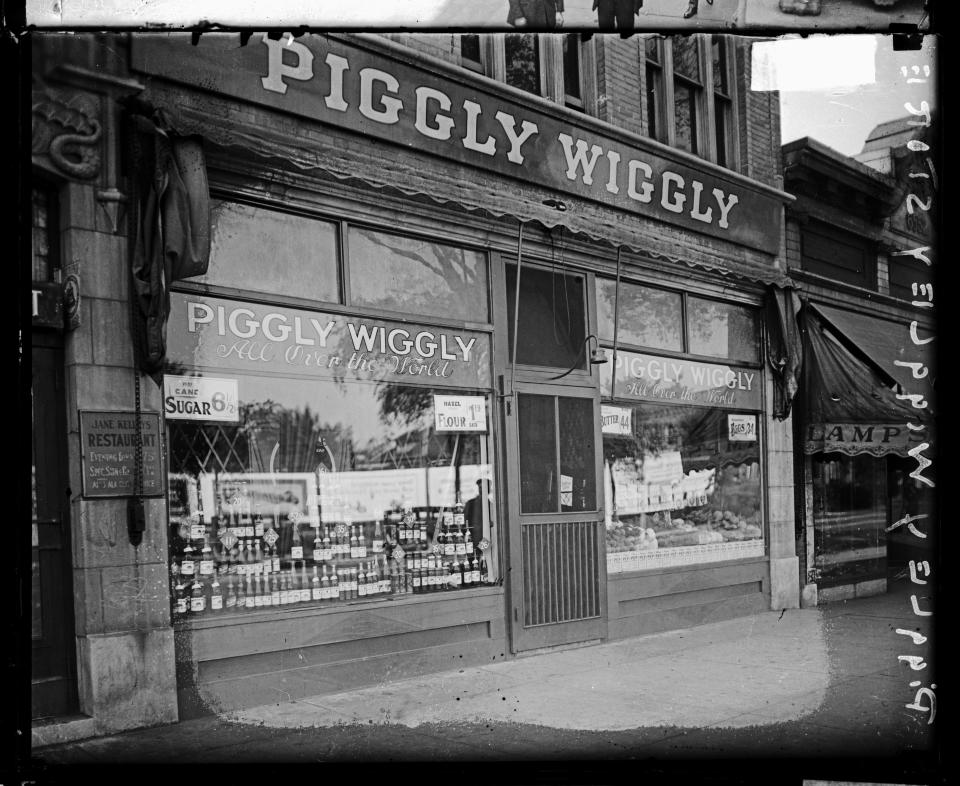
Piggly Wiggly’s success set the stage for the growth of supermarkets and grocery chains across the U.S. and beyond. Other retailers quickly took notice of the self-service model and began adopting similar strategies. Soon, the self-service supermarket concept became the standard in the grocery industry, with chains such as Safeway, A&P, and Kroger opening stores that followed Piggly Wiggly’s lead.
But Piggly Wiggly’s influence wasn’t limited to just the United States. The self-service model spread globally, changing the way grocery stores were organized in countries all around the world. Saunders’ concept revolutionized retail in a way that was unprecedented, influencing not just supermarkets, but also the broader shopping landscape. His work laid the foundation for the modern retail industry that we know today, where convenience, variety, and efficiency are key pillars.
Piggly Wiggly Today
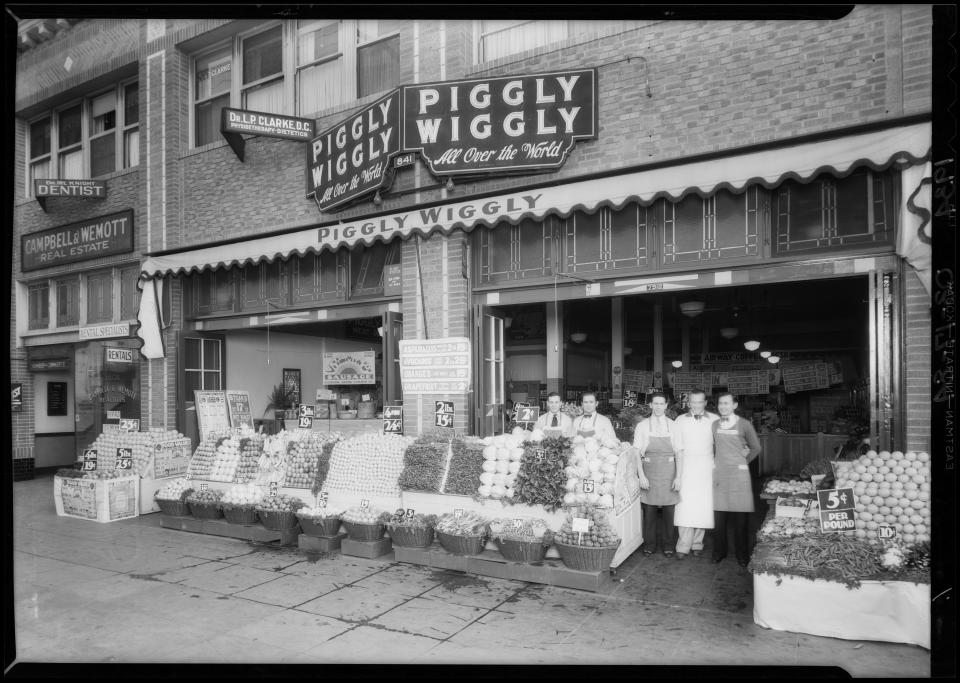
While the world has changed drastically since Piggly Wiggly’s first store opened in 1916, the brand still operates in the U.S. today. Though the company has undergone various changes and challenges over the years, including ownership shifts and competition from larger chains, Piggly Wiggly remains a testament to the enduring power of Saunders’ vision. The chain’s legacy continues in the self-service supermarket model that is now ubiquitous across the world.
Piggly Wiggly is also a part of local history, especially in Memphis, where the original store’s location is marked with a commemorative plaque. The company’s long-standing influence in the grocery industry is still felt today, as it was one of the first to introduce innovations such as self-service, automated checkout systems, and inventory management techniques that are now standard in the industry.
Gallery of Piggly Wiggly’s Historic Photos:
Here is a collection of historical photos showcasing the first Piggly Wiggly store and its impact on the grocery shopping experience.


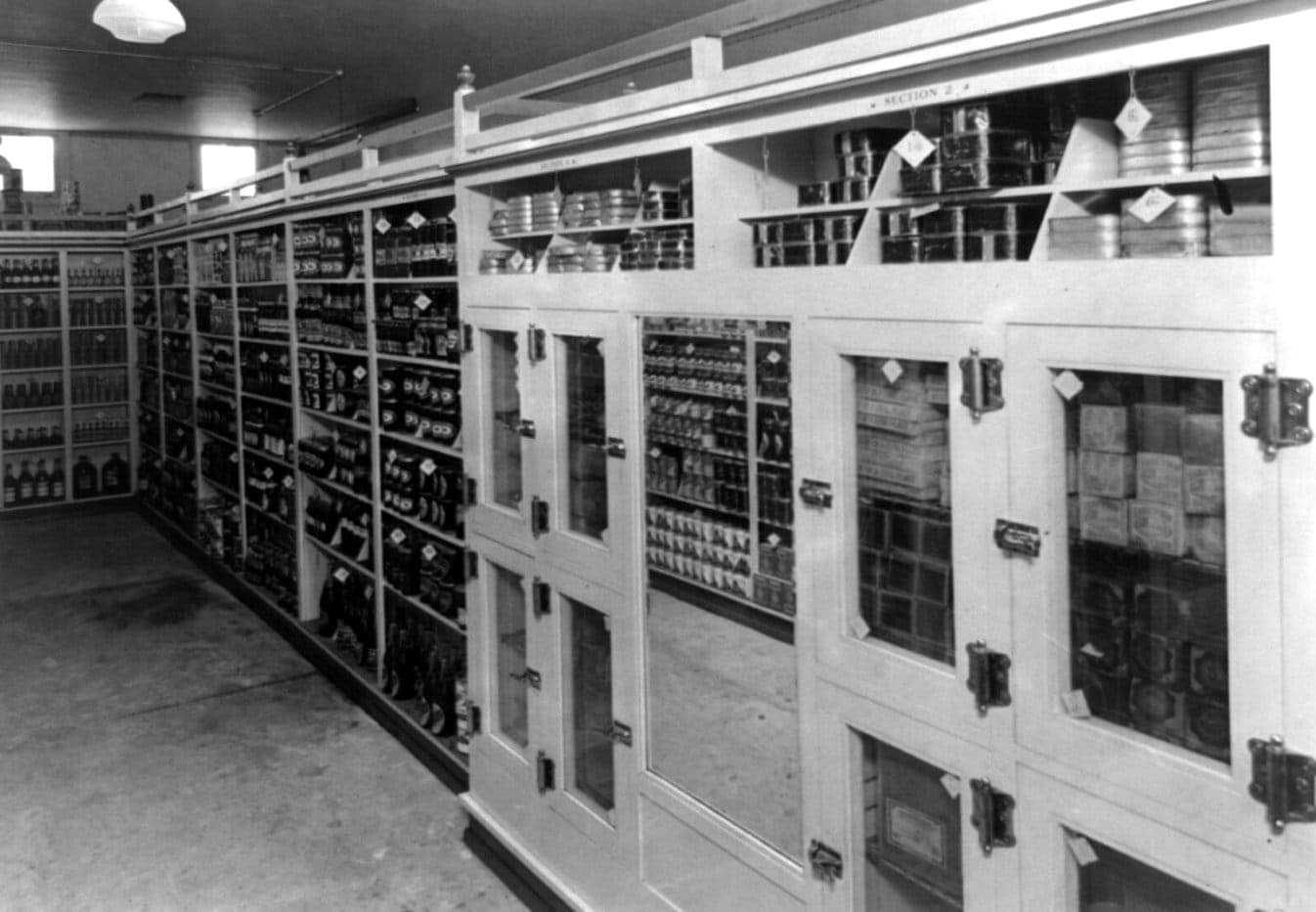
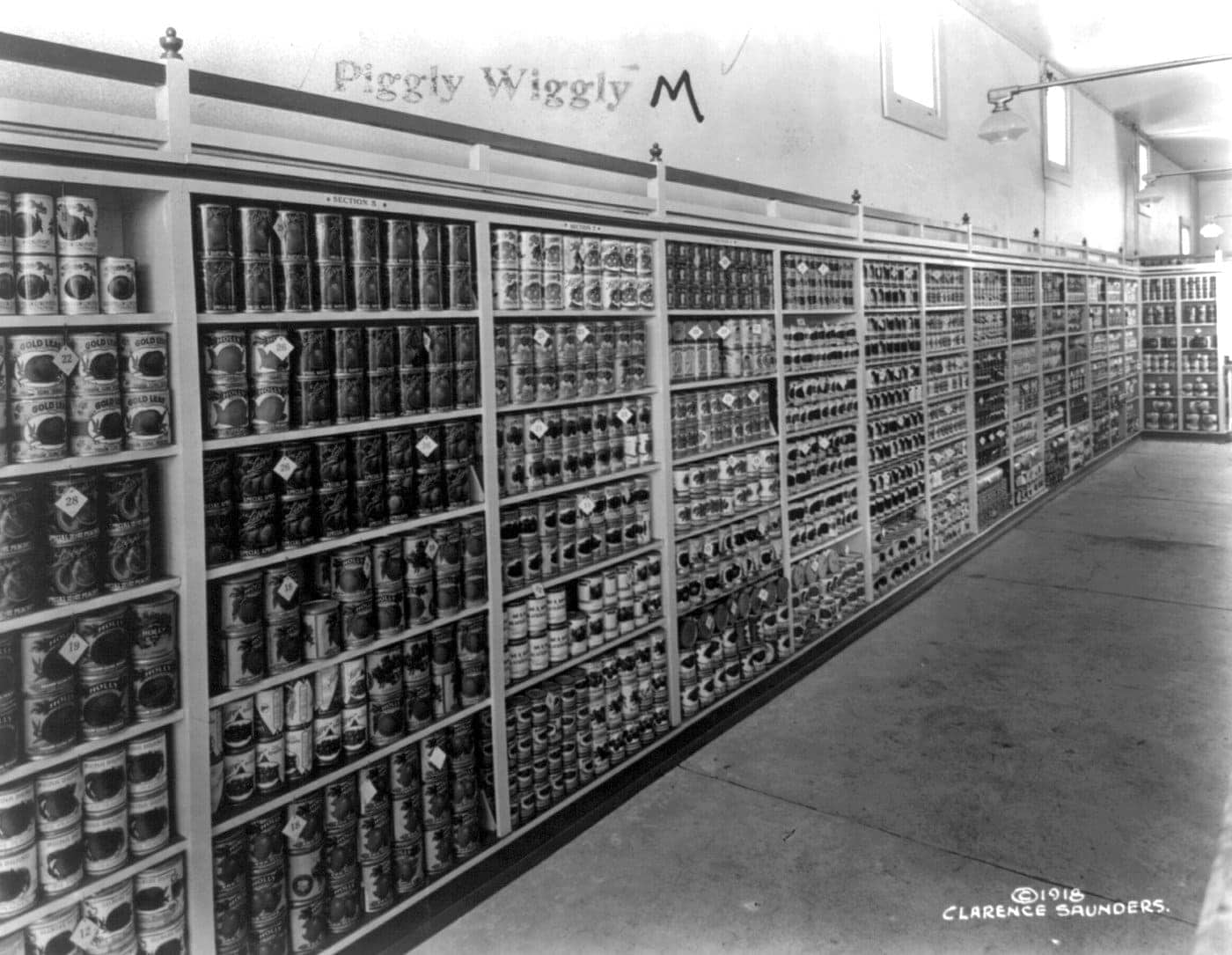
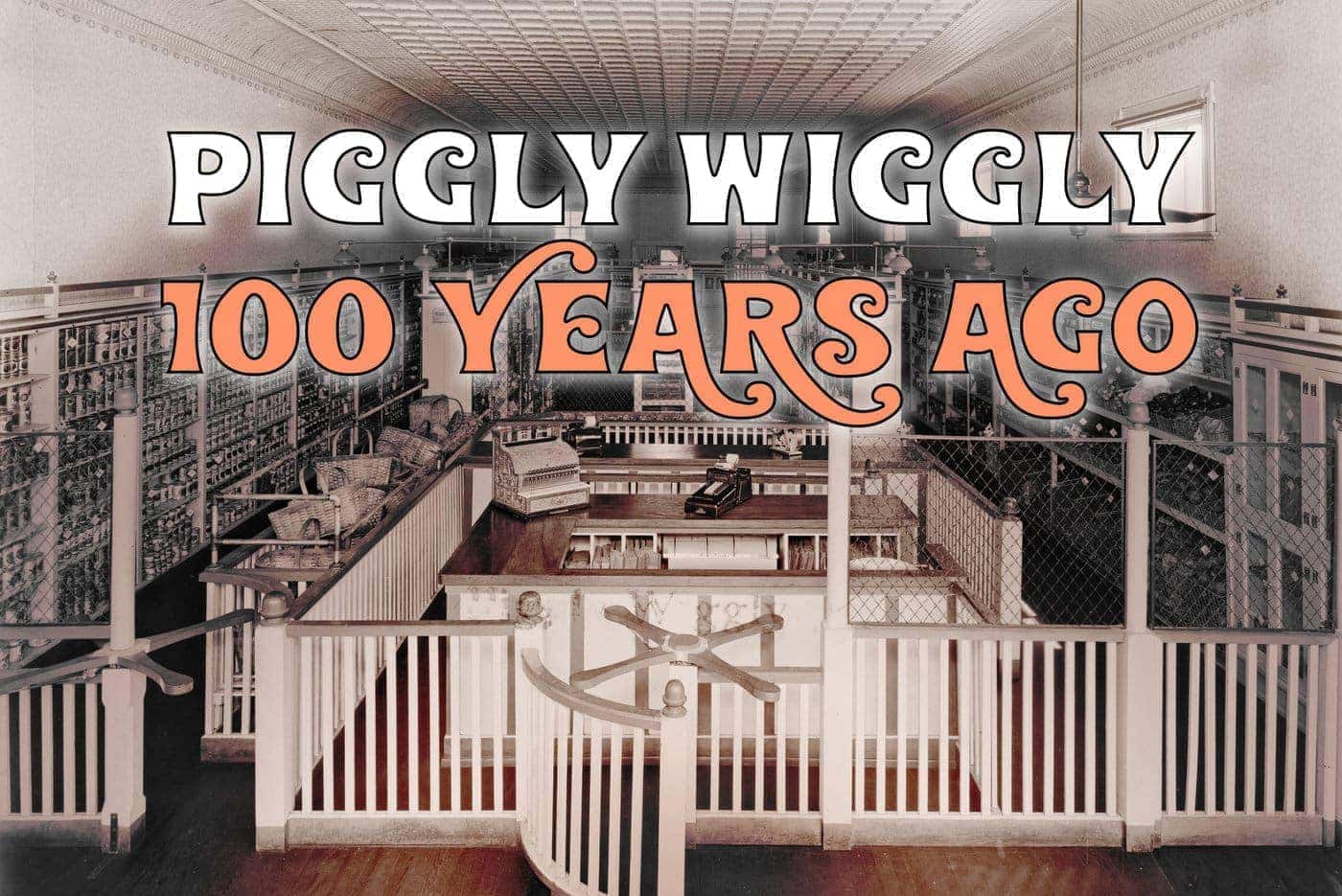
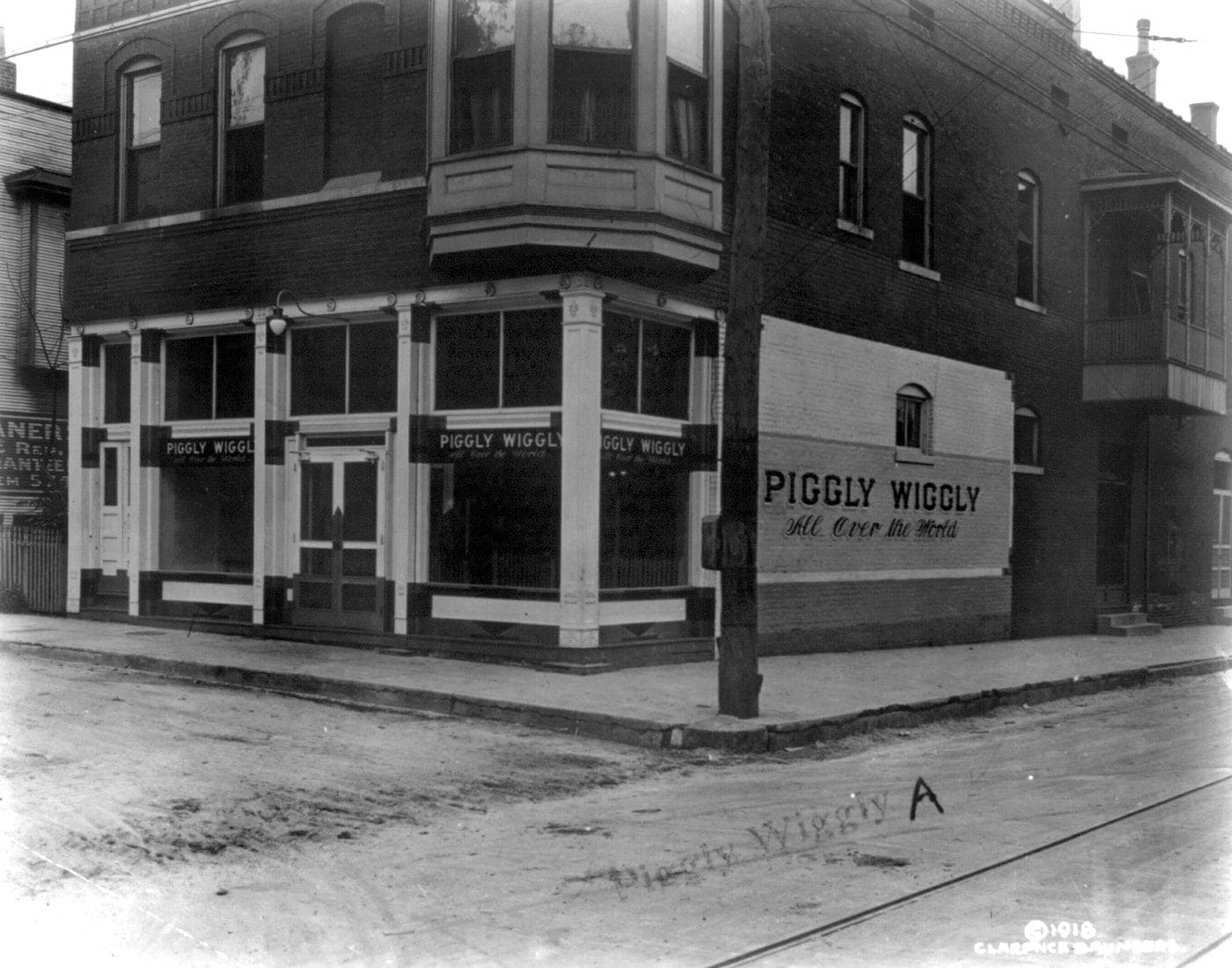
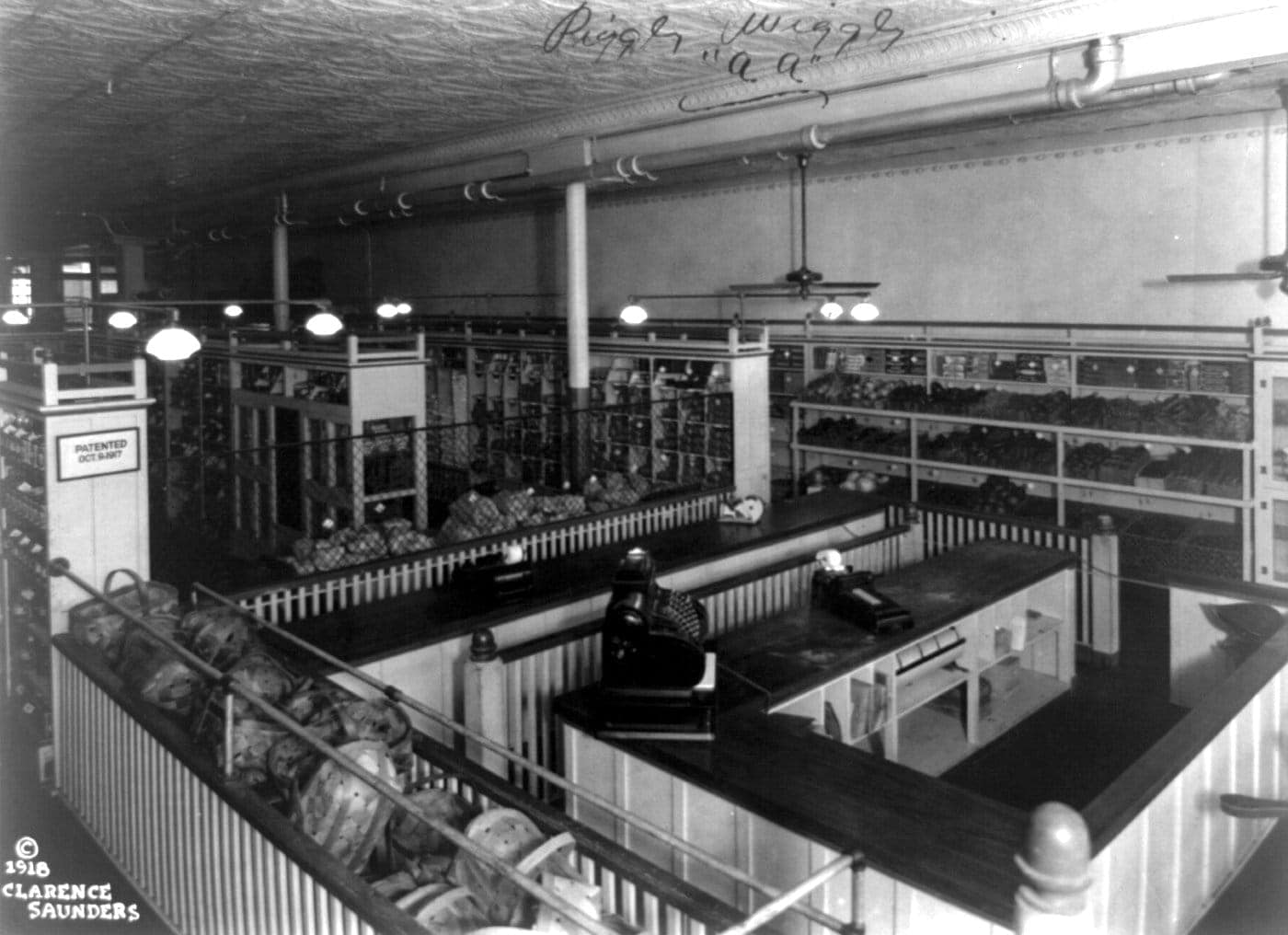
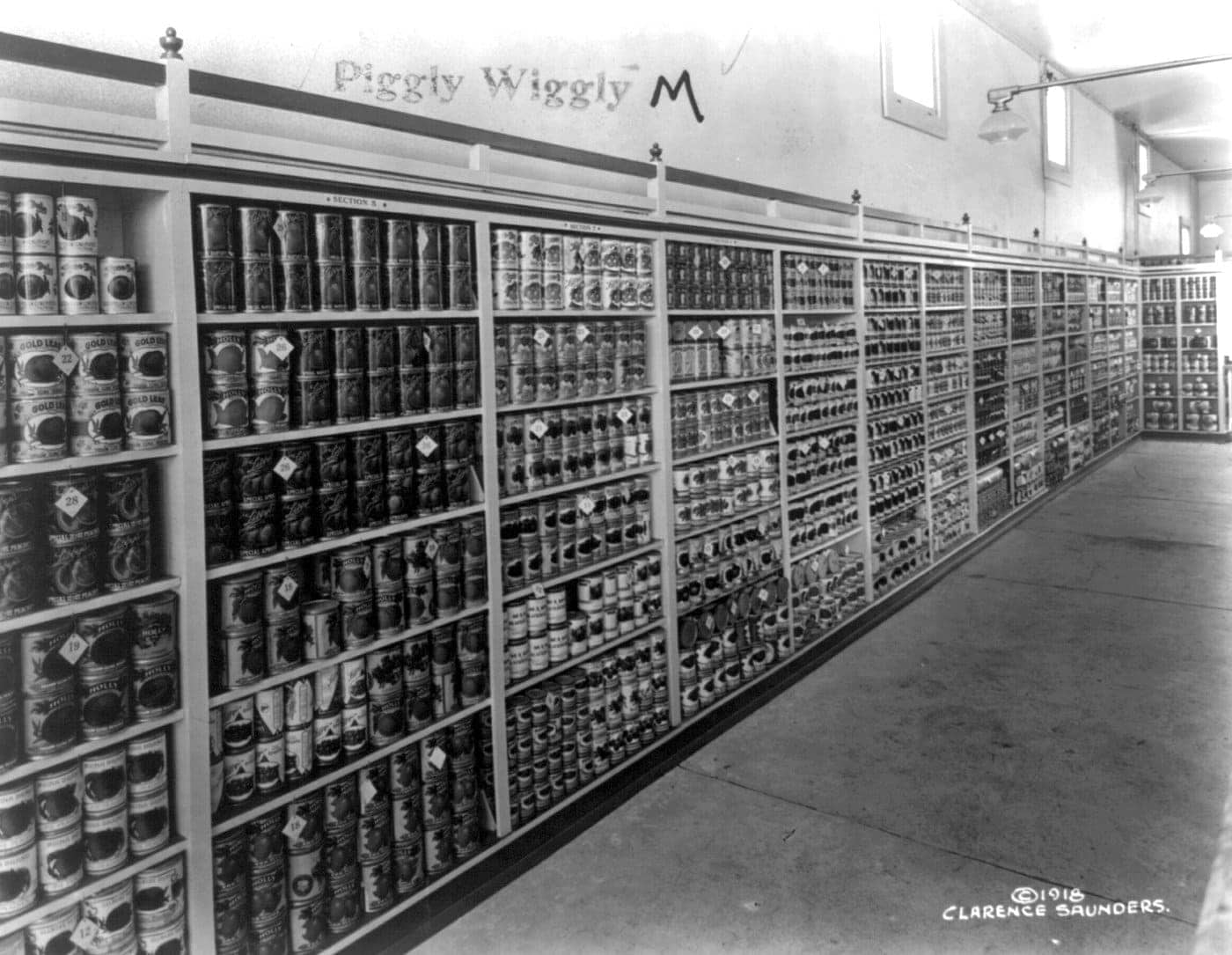
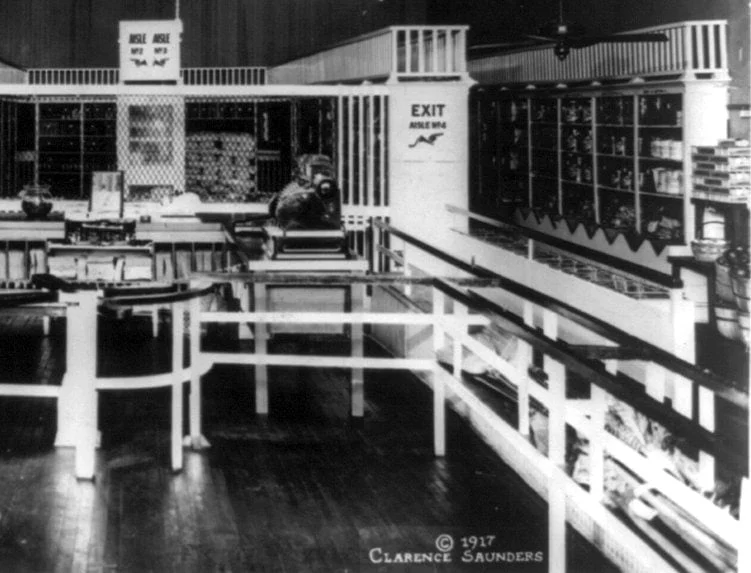
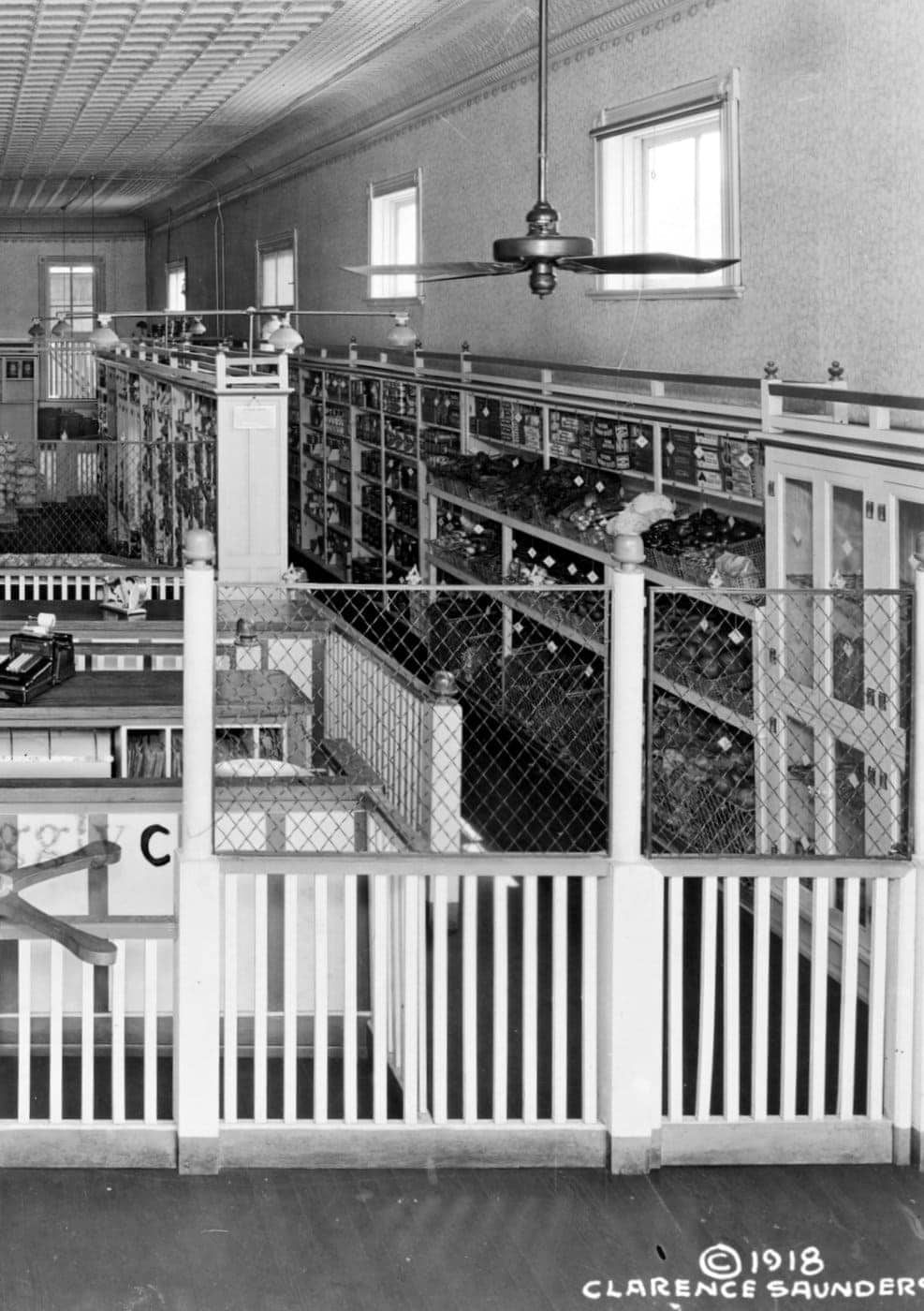
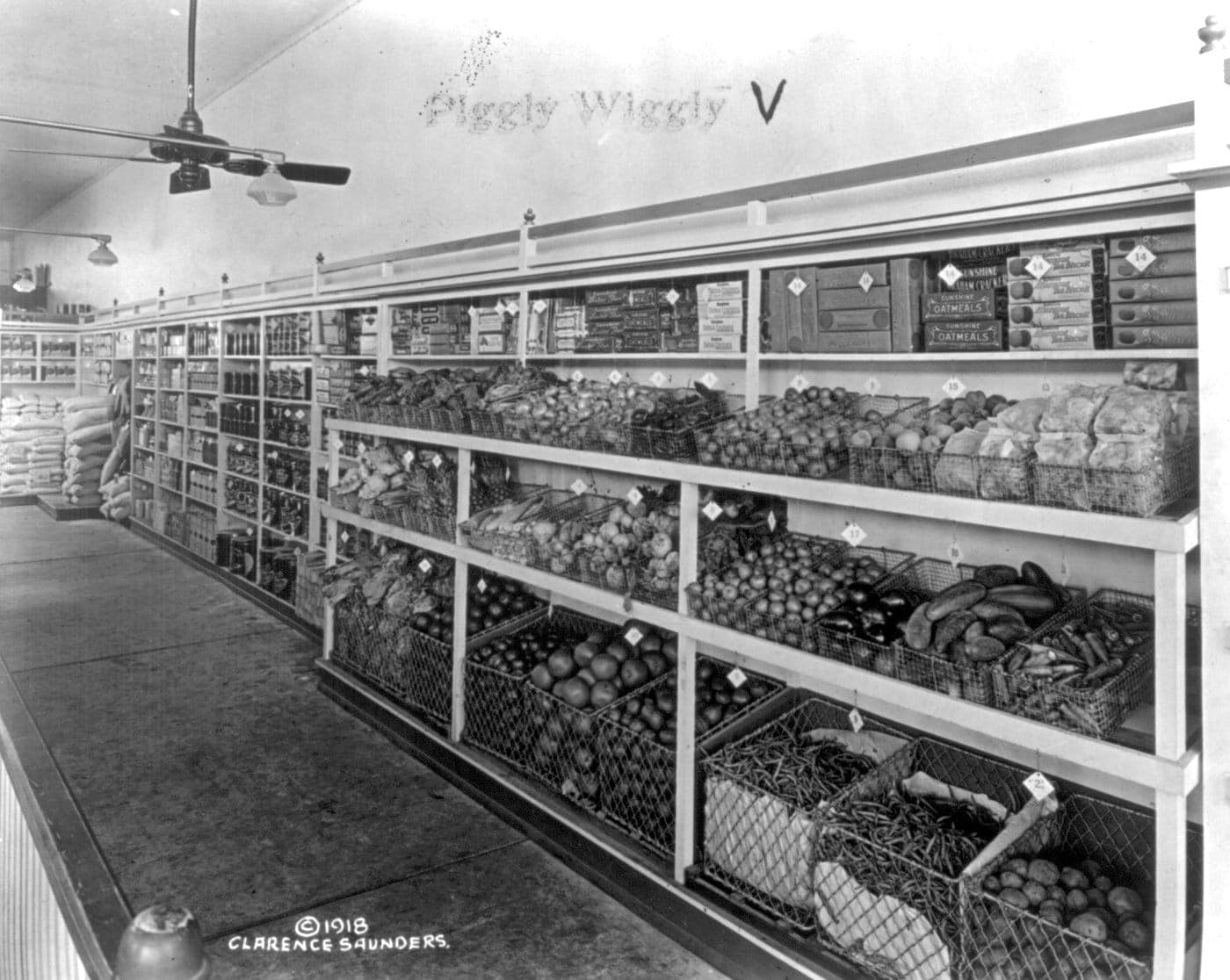

Video
Watch the video to discover the story behind Piggly Wiggly’s funny name, courtesy of Southern Living.
Conclusion: The Long-Lasting Legacy of a Retail Pioneer
The first Piggly Wiggly store in 1916 may seem like a relic of the past, but its impact on the grocery industry and retail as a whole cannot be overstated. Clarence Saunders’ innovative self-service model revolutionized shopping forever, transforming the way people interacted with stores and altering the course of the retail industry. Today, we take for granted the convenience and autonomy of grocery shopping, but it all started with a single store in Memphis that dared to challenge the status quo.
Piggly Wiggly’s success story is a reminder of how a simple idea can change the world. By offering customers greater control, convenience, and choice, Saunders created a shopping experience that continues to shape the way we shop for groceries today. And as Piggly Wiggly continues to operate in the U.S., its legacy lives on, reminding us of the power of innovation and the lasting impact of those who dare to think differently.



